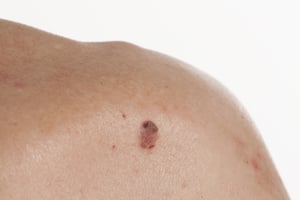 Over the past several years, skin cancer has gone from an afterthought to a very real concern for many. Increasingly, efforts are being made to highlight the dangers of UV exposure and to promote sun safety and early detection. Considering that there have been more cases of skin cancer in the past three decades than all other forms of cancer combined, the importance of such educational efforts is clear. And, while many think of cancer as primarily affecting older adults, melanoma has become one of the most common cancers afflicting young people as well, particularly women.
Over the past several years, skin cancer has gone from an afterthought to a very real concern for many. Increasingly, efforts are being made to highlight the dangers of UV exposure and to promote sun safety and early detection. Considering that there have been more cases of skin cancer in the past three decades than all other forms of cancer combined, the importance of such educational efforts is clear. And, while many think of cancer as primarily affecting older adults, melanoma has become one of the most common cancers afflicting young people as well, particularly women.
Amongst all forms of skin cancer, melanoma is the least common, accounting for less than one percent of all cases. However, it is also the most dangerous, resulting in the majority of skin cancer related deaths. The key to positive outcomes is to identify and treat melanoma at the earliest possible stages when it is most likely to be cured. Of course, the trained eye of a dermatologist can spot potentially dangerous lesions. But, how can you detect them yourself? Below are the guidelines for identifying questionable marks that need further evaluation.
The ABCDE Method of Melanoma Detection
There is a 5-step process that physicians use to determine if a mole or other lesion is benign or potentially dangerous. You can use this same process at home by simply remembering your ABC’s:
Asymmetry – Most benign moles are symmetrical, meaning that if you were divide the mole in half, the two sides would look the same. This is often not the case in melanomas.
Border – Whereas the borders of a benign mole tend to appear smooth and even, melanomas are often characterized by jagged borders that may appear notched.
Color – Moles can vary in color but are generally a single, uniform shade of brown. In the case of melanoma, multiple colors may be present, including black, white, red, or blue.
Diameter – Normal moles are typically smaller than malignant ones. If a mole is larger than the eraser of a pencil (1/4 inch or 6mm), it may be problematic.
Evolving – Brand new moles that appear suddenly should certainly be checked, but melanoma can appear in an existing mole. Regardless of how long a mole has been present it should be checked regularly for signs of change in size, color, shape, or elevation.
Conducting Monthly Melanoma Skin Checks
Conducting monthly skin self-exams is a healthy and potentially life-saving habit. When checking your skin using the above 5-step process, be thorough. If possible, stand in front of a full-length mirror in a well-lit room and use a hand mirror to aid in checking difficult to see areas. Be sure to check everywhere, even places that are not regularly exposed to large amounts of sun such as behind the ears or in between toes. If possible, have a loved one help as well by examining your scalp and back.
We often become most thoughtful about skin cancer in the summer months, but sun protection and skin examinations are important year-round. Conduct your own monthly checks and should skin cancer impact your own life, seek treatment with a caring, skilled oncologist such as those at Lane Cancer Center.




